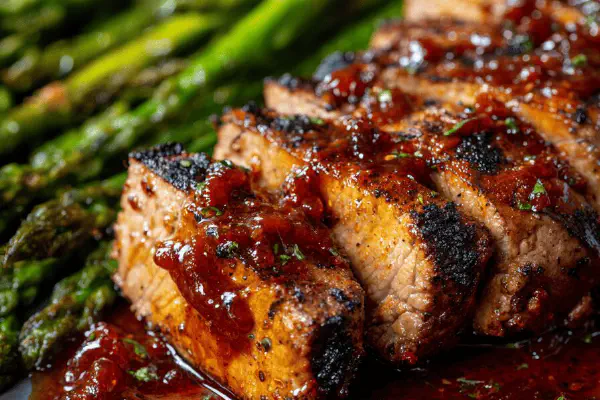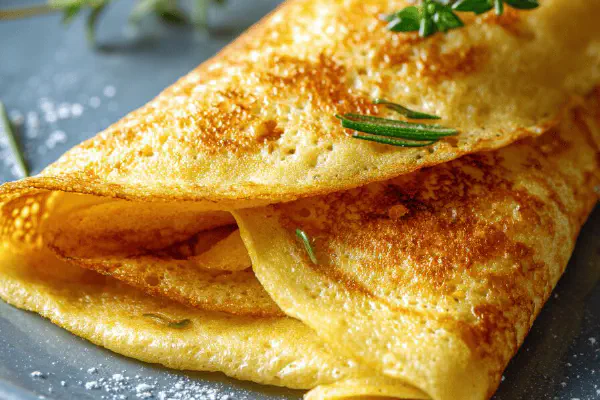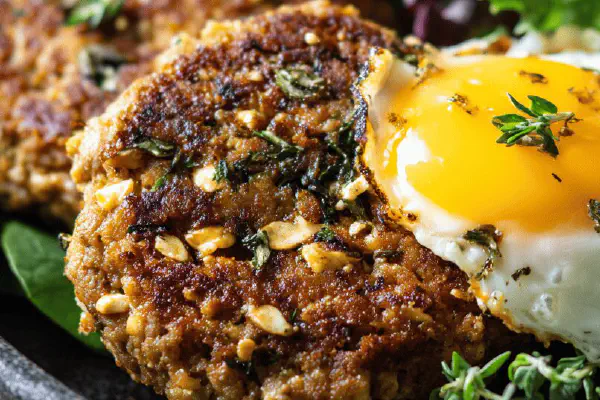Herbed Asparagus Omelette Twist

By Emma
Certified Culinary Professional
Ingredients
- 135 ml (1/2 cup plus 1 tbsp) water
- 100 g (3.5 oz) asparagus trimmed, cut into 2 cm lengths
- 5 large eggs
- 25 ml (1 1/2 tbsp) unsalted butter
- 45 ml (3 tbsp) mixed fresh herbs finely chopped (cilantro, flat-leaf parsley, basil)
- 30 ml (2 tbsp) aged Manchego cheese flakes
About the ingredients
Method
Blanch and prep asparagus
- Bring water almost boiling in a medium non-stick skillet over high heat. Add asparagus, toss briefly, and cover to steam for about 4 minutes. Water should reduce close to dry, asparagus tender but still crisp. Season lightly with salt and freshly ground pepper. Remove asparagus with slotted spoon onto plate. Wipe skillet dry with paper towel.
Whip eggs and season
- In a bowl, break eggs and whisk vigorously until uniformly pale, airy bubbles forming. Salt and pepper to taste. Avoid over-salting since cheese adds saltiness.
Cook egg base
- Return skillet to medium heat and melt butter. It should foam and smell slightly nutty but not brown. Pour eggs in, tilting pan to spread evenly. Immediately, with a heatproof spatula, start nudging the still liquid eggs at edges inward, letting runny egg flood underneath. This prevents burnt bottom and uneven cooking. After 2-3 minutes, surface will look set but moist in center.
Layer asparagus and herbs
- Make a narrow strip with asparagus down the middle. Scatter herbs generously all over the egg’s surface. Herbs give brightness; trust the bit of moisture they release.
Slow finish and fold
- Lower heat to medium-low. Let omelette cook gently. Watch edges firming and forming a slight pull away from skillet—this signals readiness. After 2-3 minutes, carefully fold edges over asparagus strip, forming a neat wallet. The center still slightly unset, almost custardy. Cook for another 2 minutes just to set the fold and avoid runny eggs—watch for gentle wobble, never dry or browned.
Plate and garnish
- Slide omelette onto plate using spatula. Top with sharp Manchego cheese flakes, adding salty, nutty punch. Heat from omelette will soften cheese slightly, no melting required.
- Serve immediately. No waiting. Omelette loses magic fast.
Cooking tips
Chef's notes
- 💡 Blanch asparagus with water barely boiling; steam tight. Avoid soggy stems by trimming woody parts. Two centimeters length hits right texture, still snaps. Remove with slotted spoon, dry skillet fast. Wet pan ruins egg texture. Control steam moisture over direct boil to keep bite fresh.
- 💡 Whisk eggs till pale, bubbles show. Don’t overmix, keeps air but not rubber. Salt lightly since cheese adds salt burst later. Butter’s foam stage key. If it browns, flavor shifts wrong. Melt gently over medium heat only. Pour eggs and avoid stirring like scrambled. Nudge edges only to shape, trap runny center.
- 💡 Asparagus strip placed mid-omelette after eggs lose shine but still wet on top. Herbs sprinkled loosely, not buried; moisture release brightens whole. Parsley for brightness, cilantro punchy, basil softens herb profile. Timing here delicate; set edges but keep center wobble as guide.
- 💡 Heat reduction to medium-low crucial. Watch edges pull from pan—signals ready to fold. Fold gently edges over asparagus creating wallet shape. Cook fold for two minutes more; avoid dry or brown surface. Wobble must remain in middle, custard-like, invites creamy bite. Higher heat breaks fold, too low leaves runny.
- 💡 Cheese flakes on top post plating adds punch without melting. Manchego firm, flakes easily, softens from residual heat. Parmesan or pecorino work if Manchego missing; skip processed cheese always. Butter can swap olive oil, but butter’s nutty aroma lost. Flexible thin spatula key—plastic or wood better; metal risks pan damage, no scratches allowed.
Common questions
Why blanch asparagus?
Keeps bright green color, tender-crisp texture. Boiling water dries fast, risks soggy ends or burnt tips. Steam method controls moisture, avoids mushy bites. Timing tight—over 4 mins softens too much.
Can I use other cheese?
Yes, Parmesan or pecorino good substitutes. Aim for aged versions, flaky texture. Avoid processed kinds, they melt wrong and change texture. Cheese plays salt role too—reduce added salt proportionally.
Omelette cracked during fold, what’s wrong?
Heat likely too high or eggs overcooked. Fold when edges just pull away, center wobbling. Fold slow, gentle pressure only. Too hot dries surface, brittle folds snap. Use medium-low heat to keep elasticity.
How to store leftovers?
Refrigerate in airtight container. Reheat gently in low pan or microwave. But omelette loses creamy softness fast, becomes rubbery. Best eaten fresh. Can chop and fold into scrambled eggs next day for rescue.



